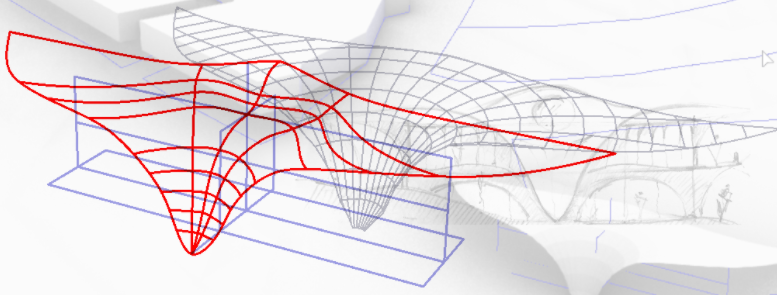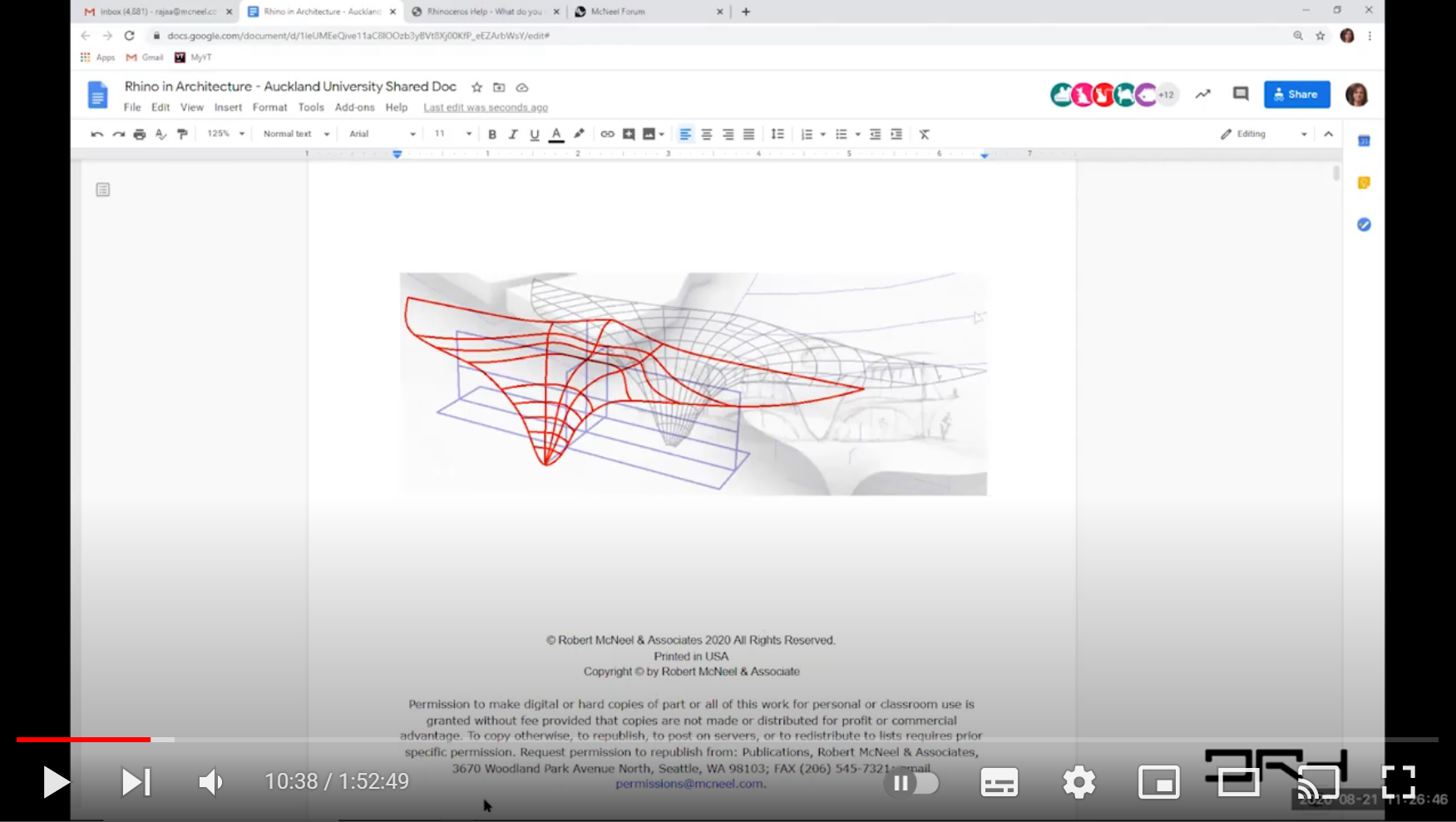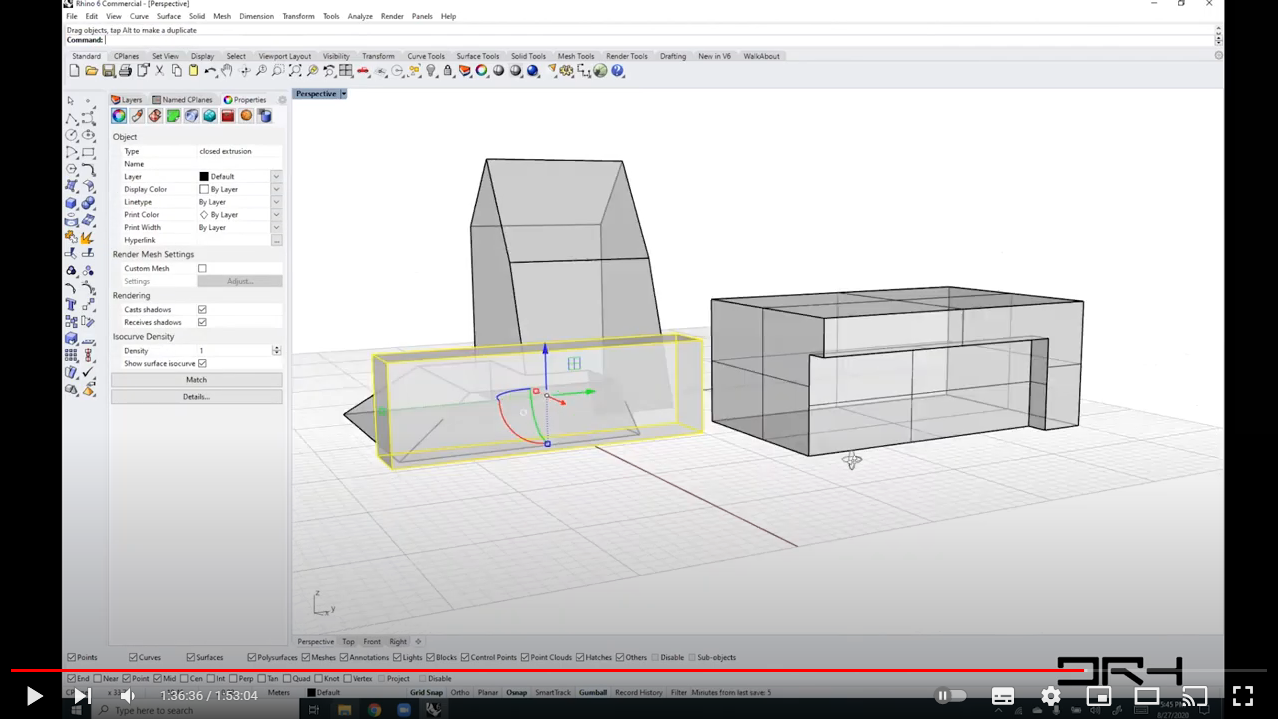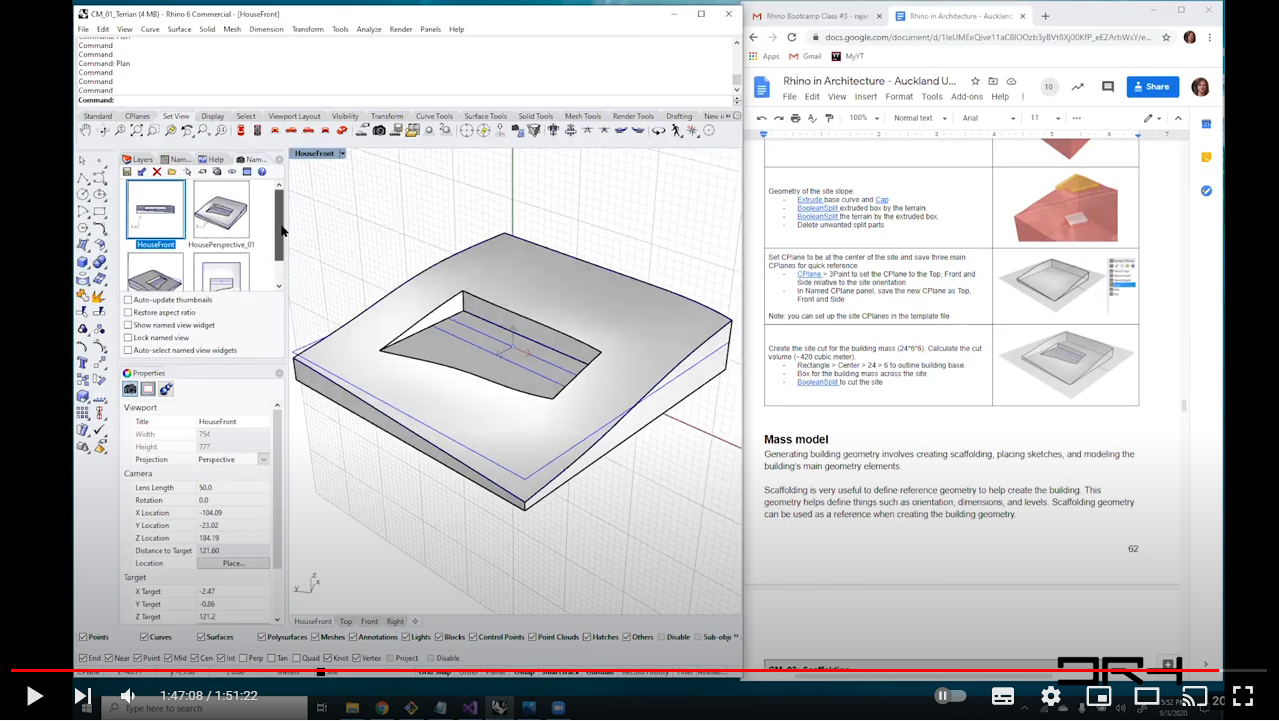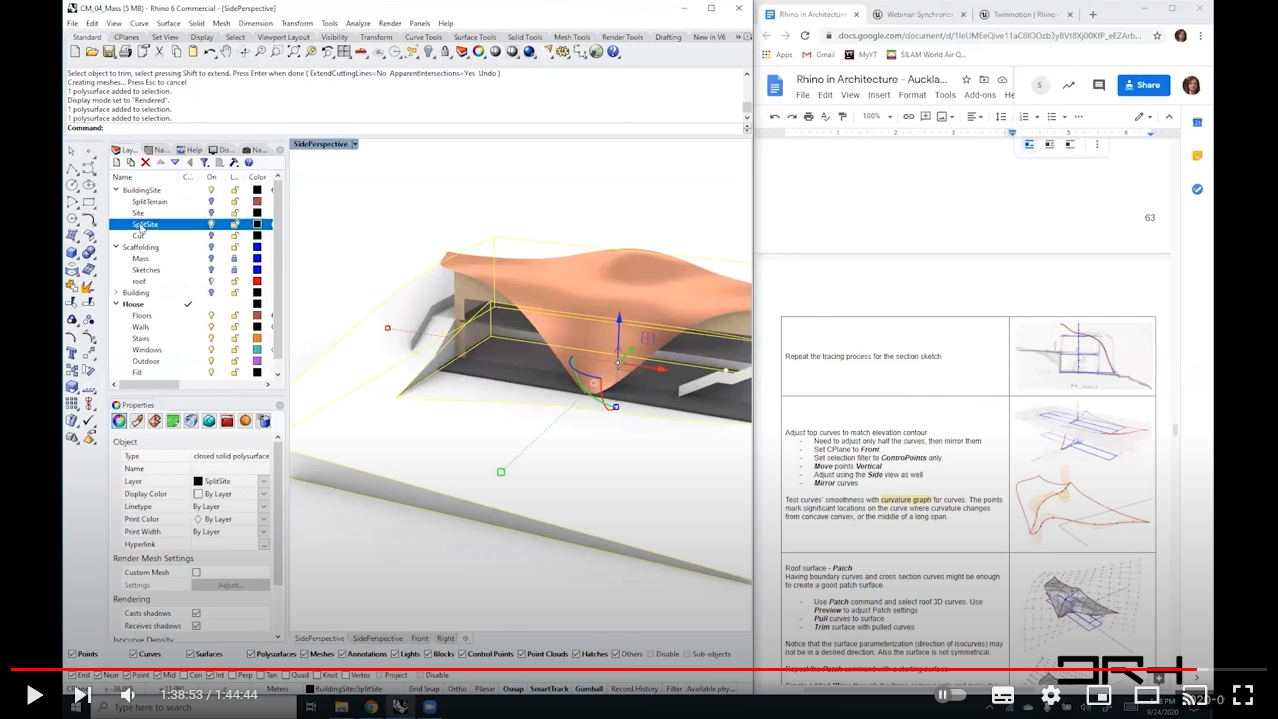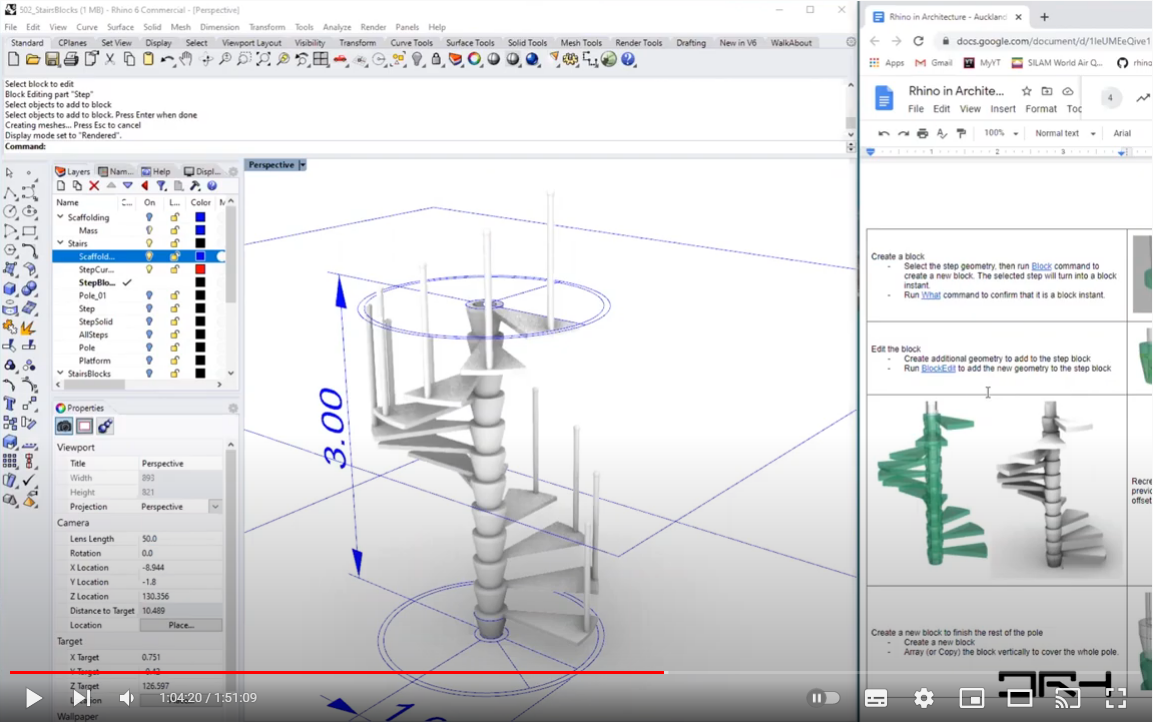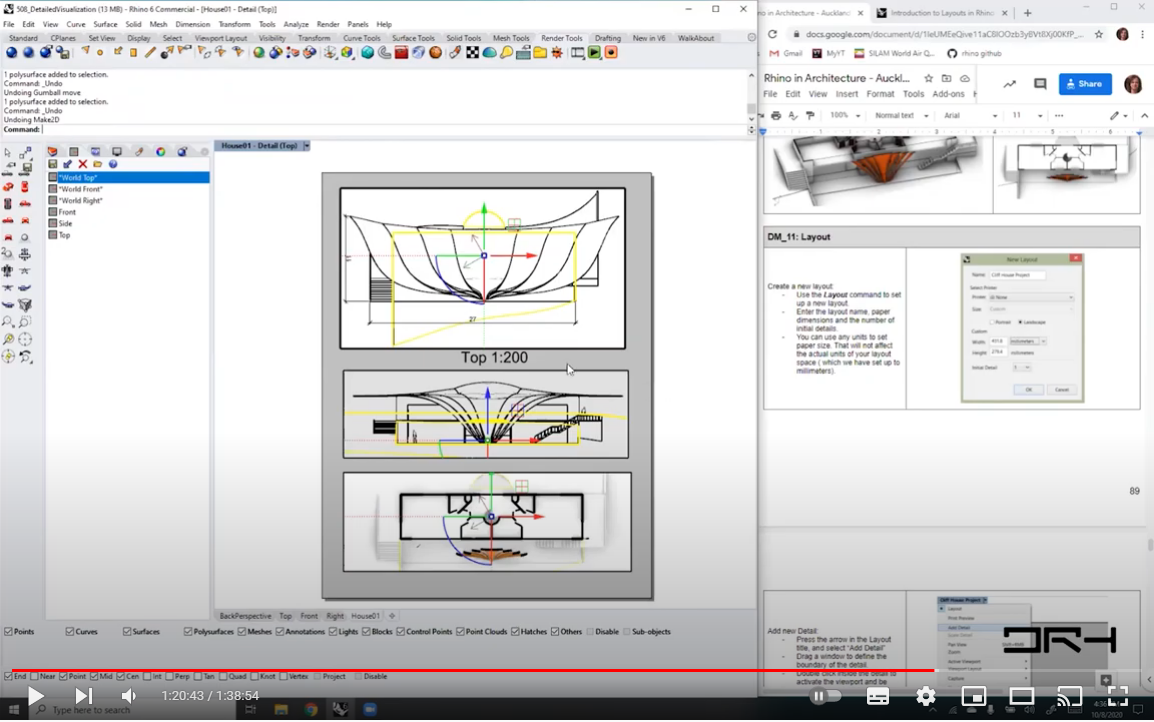Sidebar
Rhino in Architecture Course
Target Audience
- This course is for creative designers working in architecture, digital fabrication, and other building related fields, as well as students in these fields.
Prerequisites
- Rhinoceros Intro and Intermediate skills. This course assumes the student can efficiently navigate the Rhino application and model, create and edit curves surface and solids.
Course Outline
This course focuses on architectural workflows using Rhinoceros. It introduces the best practices to maximize productivity and use the rich set of functionality supported by Rhino. It covers various scenarios for concept modeling and detailed design and visualization.
Topics
- Modeling vocabulary: best practices to work productively within the Rhino environment. Introduce topics such as interface, navigation, modeling constraint, visualization and data management.
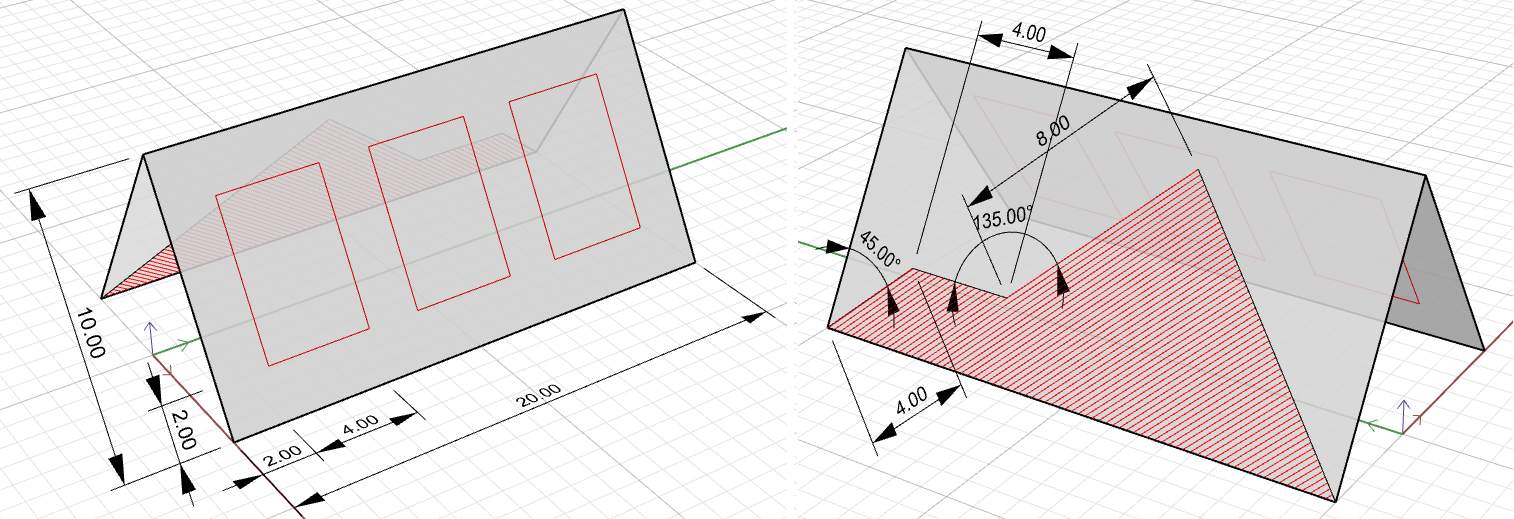
- Modeling workflows in architecture: the bulk of the material walks through a few modeling workflows common in architectural design, both in concept design development and detailed modeling.
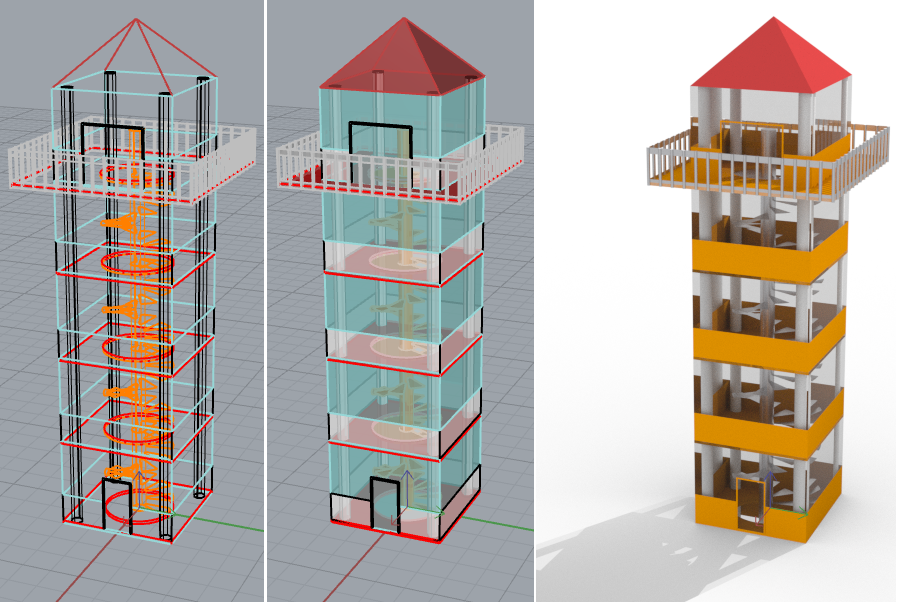
Expected Outcomes
- Learn the Rhino modeling environment and different ways to customize it.
- Learn the Rhino modeling vocabulary and best practices for productivity.
- Learn modeling workflows in both concept and detailed design.
Class Recordings
The edited recordings are curtesy of the Digital Research Hub at Auckland University.
Session 1 of 6
- Modeling vocabulary: common vocabulary in digital modeling and how it appears in Rhino. Include topics such as user interface, navigation, coordinates, modeling aid, geometry and data.
Session 2 of 6
- Customize the modeling environment: develop templates, set options, custom colors and set up easy access to common tools.
- Scaffolding: create reference geometry to set the general dimensions, orientation, scale and snapping.
Session 3 of 6
Session 4 of 6
Session 5 of 6
- Advanced geometry: create, analyze and rationalize complex geometry.
- Advanced visualization: texturing, rendering and animation.
Session 6 of 6
Class Materials
training/rhino_for_arch/rhino_in_architecture_course.txt · Last modified: 2022/12/16 by maryfugier

